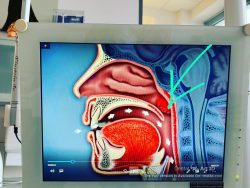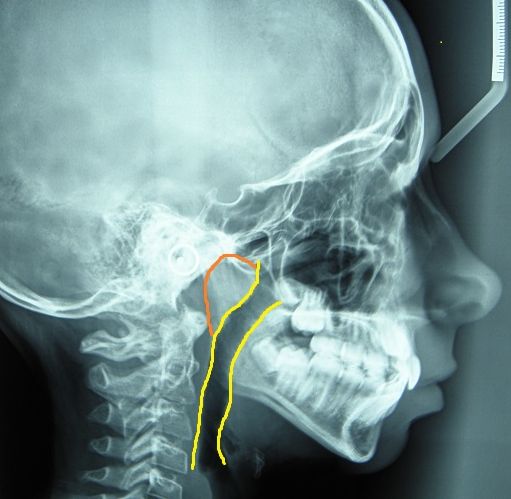Mouth breathing – allergies
Dentysta stomatolog Warszawa Ursynów ADENTIS / Services / Orthodontics without extraction / Mouth breathing – allergies
Healthy and proper breathing IS YOUR CHILD’S HEALTH< /span>
DON’T WAIT, REACT!

Consult your pediatrician, < /span>ENT specialist, speech therapist, physiotherapist, dentist dealing with orthodontic and holistic treatment.< /span>
Pay attention to how your child sleeps kid!
A baby who sleeps with his mouth open, may have cracked lips. Breathing through the mouth causes poor tongue positioning. Which in the future may lead to a change in the shape of the upper jaw from a “U” shape to a “V” shape. A narrow jaw arch forces the mandible backward (lower jaw), retracts the tongue and may cause not only snoring, but also apnea. Such a child is hypoxic, sleeps poorly, and is tired during the day. Changes in the shape of the upper jaw are changes in the facial skull, which also affect body posture. One incorrect activity causes further irregularities.

Does your child breathe through the nose?
What can be the consequences of mouth breathing?
Does mouth breathing affect your child’s development?
Does breathing through the mouth affect the attractiveness of the face?
Does mouth breathing affect brain function?
Does mouth breathing affect your entire life?
IS NOSAL BREATHING IMPORTANT?
It’s worth checking out everything and more. It is worth being precise and trying to implement your plans. A good plan means good treatment. It’s easier to work in a team. Everyone pays attention to different details.
We invite children from 5-6 years of age for consultations.
 |
 |
Mouth breathing can have many causes, such as:

- hypertrophy of the adenoid.
- allergies,
- deviation of the nasal septum,
- narrowed airways,
- overgrown palatine tonsil,
- nose injuries.
The above-mentioned factors permanently or periodically cause the patient’s mouth to be open when breathing at rest, which results in changes in the form of a decrease in the tension of the circular muscles of the mouth. This causes the child to have a constantly parted mouth and establish a new, incorrect breathing pattern. This permanently retracts and lowers the jaw and leads to tilting the head back, thus causing a spine injury. Such changes in the facial skeleton change the position of the tongue, which is located flat on the bottom of the mouth, instead of high on the palate, as in normal conditions with a closed mouth, causing constant stimulation of the jaw to grow. The drooping of the tongue leads to greater pressure of the cheeks on the maxillary teeth, causing a transverse narrowing of the maxilla and a high arched palate.
The facial appearance of patients who breathe through the mouth is manifested by constantly parted lips, increased dimensions of the lower part of the face, and a narrow base of the nose.
The child looks “as if he was staring.”
 |
 |
Improper mouth breathing promotes more frequent infections because the air entering the lungs through this incorrect route is less heated and purified.
If the causes of nasal breathing are effectively removed, and not just the symptoms, the child will regain the correct breathing pattern and return to normal, because the body naturally strives for balance.
Occlusal disorders:
- narrowing of the jaw, which may result in a crossbite
- retraction and (or) shortening of the mandible – in the form of an overbite
- crowding of teeth in one or both dental arches, spine injury (slouching) – 1 cm displacement of the center of gravity of the skull causes many kilograms of abnormal load on the spine and in the future migraines, curvature and spine problems.
Therefore, orthodontic treatment should be carried out at multiple levels and the malocclusion should be analyzed in conjunction with the cause of its occurrence.
At Adentis, in addition to orthodontic treatment aimed at correcting dental irregularities, exercises are implemented to change the breathing pattern from oral to nasal. We pay attention to muscle balance and the position of the tongue on the palate.
Restoring the correct breathing pattern and optimal muscle tone in the facial area contributes to a stable treatment effect.
Leaving functional disharmony may lead to recurrence of malocclusion.
Teeth are the recipient of the problem, not the sender. The cause of dental abnormalities should be eliminated, not just the symptoms of malocclusion.
 |
 |
